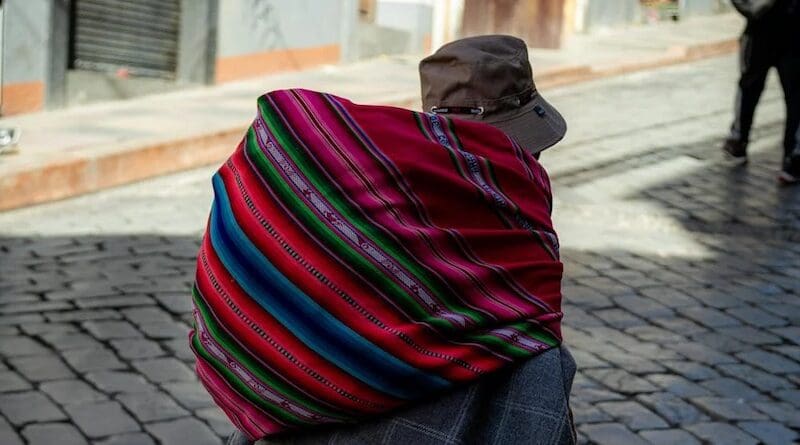US Job Growth At 206,000 in June, Unemployment Edges Up To 4.1 Percent, Ending Streak – Analysis

By Dean Baker
The establishment survey reported the economy created 206,000 new jobs in June. However, there were downward revisions to reported job growth for the prior two months, leaving the June level just 206,000 above the level previously reported for May.
The household survey showed unemployment continuing its gradual uptick, hitting 4.1 percent (4.05 percent before rounding). This ended the 28-month streak of below 4.0 percent unemployment, the longest since a streak of 35 months from January 1951 to November 1953.
Wage Growth Slows to 3.6 Percent Annual Rate
The annualized rate of hourly wage growth slowed to 3.6 percent over the last three months, this compares to a rate of 3.9 percent over the last year. We are essentially back to the pre-pandemic pace when inflation was at or below the Fed’s 2.0 percent target. It is worth noting that if the profit share of income is to revert back to its pre-pandemic level, wage growth will have to be somewhat faster than a non-inflationary pace for a period of time to allow the wage share to rise.
Unemployment Rate Now Up 0.7 Percentage Points from Low Hit Last April
The unemployment rate has inched up gradually over the last year even as the economy has been generating jobs at a very rapid pace. The current 4.1 percent rate is still very low by historical standards, but it does indicate a notable weakening in the labor market from earlier in the recovery. Even if the current level still indicates a strong labor market, if it rises further from current levels, it will be a serious cause for concern.
Unemployment for Black Workers Rises to 6.3 Percent
The unemployment rate for Black workers rose 0.2 percentage points to 6.3 percent in June. The monthly data are highly erratic, but the unemployment rate for Black workers has averaged 6.0 percent over the last three months. It had hit an all-time low of 4.8 percent last April. That figure was likely an anomaly, but the three-month average for the period from March to May of last year was just 5.2 percent. This suggests a real rise in unemployment for Black workers of close to 1.0 percentage points.
Unemployment Rate for Asian American Workers Jumps 1.0 Percentage Points to 4.1 Percent
The unemployment rate for Asian American workers, which is usually slightly below the rate for white workers rose 1.0 percentage points to 4.1 percent, the highest since October 2021. This is likely an anomaly that will be reversed in future months, but it is still an unusually large rise.
Employment to Population Ratio for Prime-Age Workers Unchanged
The employment to population ratio for prime-age workers (ages 25 to 54) was unchanged in June at 80.8 percent, 0.2 percentage points above its pre-pandemic peak. For men, it rose 0.5 percentage points to 86.5 percent, 0.1 percentage points below recovery peak. The rate for women dropped 0.6 percentage points to 75.1 percent from a record high in May. These data are erratic, but these are still unusually large monthly changes suggesting there could be something real here.
Share of Unemployment Due to Voluntary Quits Remains Low
Unemployment due to voluntary quits is a measure of workers’ confidence in the labor market since it means that they are willing to quit a job before they have a new one lined up. This share rose to 11.2 percent from 10.8 percent in May. This is still very low given the overall unemployment rate. It averaged 13.1 percent in the two years before the pandemic and peaked at 16.0 percent in 2022.
Number of People Working Part-time for Economic Reasons Falls by 199,000
The number of people working part-time because they could not find full-time jobs fell by 199,000 in June to the lowest level since December 2023. It is important to recognize that the vast majority of people working part-time (82.0 percent) indicate they have chosen to work part-time.
Government Sector and Health Care Lead in Job Creation in June
The government sector added 70,000 jobs in June, while health care added 48,600 jobs. The gain in the government sector was well above its average monthly gain of 51,000 over the last year, while the growth in health care was down from an average monthly gain of 64,000. Employment growth in the government sector has mostly trailed employment growth in the private sector in the recovery, now standing at 2.2 percent above its pre-pandemic peak, as compared to 4.5 percent for the private sector
Construction Adds 27,000 Jobs While Manufacturing Loses 8,000
The two most cyclical sectors had a mixed story in June, with construction showing a strong gain of 27,000 jobs, somewhat above its average of 20,000 a month over the last year. The job loss in manufacturing is in keeping with its pattern for the last year and a half, where employment has been little changed.
Within manufacturing, there are still some bright spots. The motor vehicle sector added 5,900 jobs in June and has added 36,600 jobs over the last year.
The continued strength in manufacturing and construction should alleviate any immediate recession fears since these sectors have always shown the sharpest losses in a downturn. The restaurant sector is showing some clear signs of weakness. It lost 3,100 jobs in June and has added just 900 jobs over the last three months. Job growth in the sector has been weak since October, with employment increasing by just 40,000 over the last eight months. By contrast, monthly job growth had averaged 27,000 in the year leading up to October. Slower job growth does fit with Commerce Department data showing slower growth in demand at restaurants.
June Report Shows Clear Evidence of a Slowing Economy
While the ending of a streak of below 4.0 percent unemployment does not really mean anything and 4.1 percent unemployment is still very low by historical standards, the clear trend towards higher unemployment is cause for concern. As noted, the relatively low share of unemployment due to voluntary quits indicates less confidence in the labor market than would be expected given the relatively low unemployment rate.
In this respect, it is also worth noting that the share of long-term unemployed (more than 26 weeks) increased to 22.2 percent, the highest since May 2022. This indicates that some unemployed workers are having a harder time finding new jobs. It had bottomed out at 17.5 percent last February, although this is still a relatively low share.
In any case, with wage growth settling to a place that is consistent with the Fed’s 2.0 percent target, or at least very close, the balance of risks indicates that the major concern at this point should be weakness rather than inflation. We’ll see if the Fed views it that way.
- This article was published at CEPR






